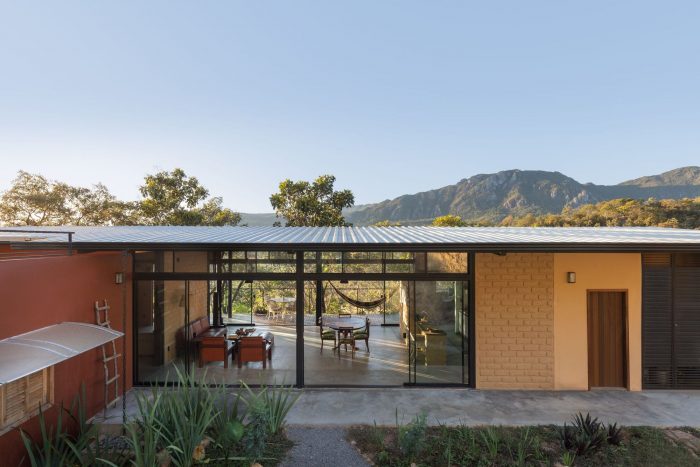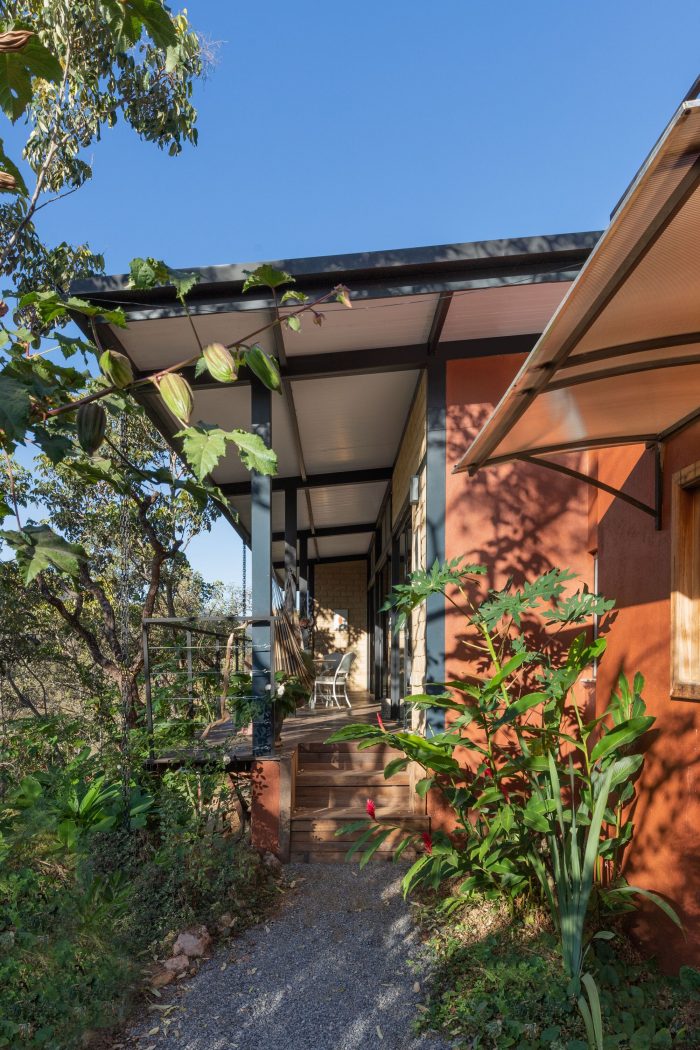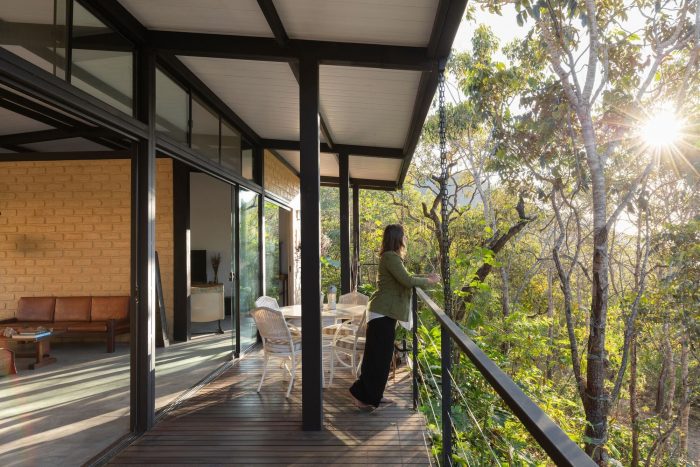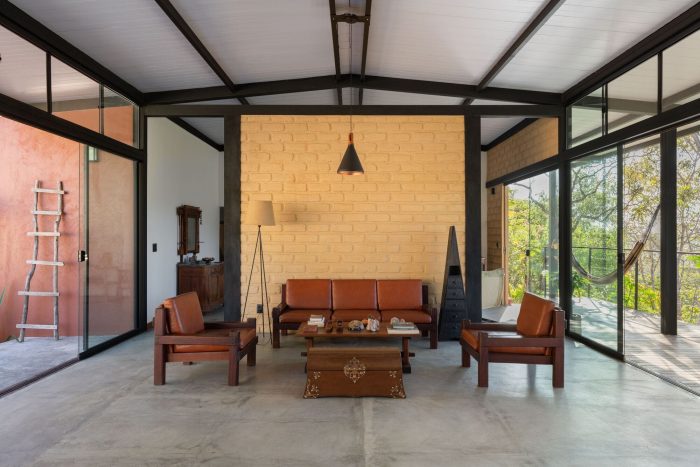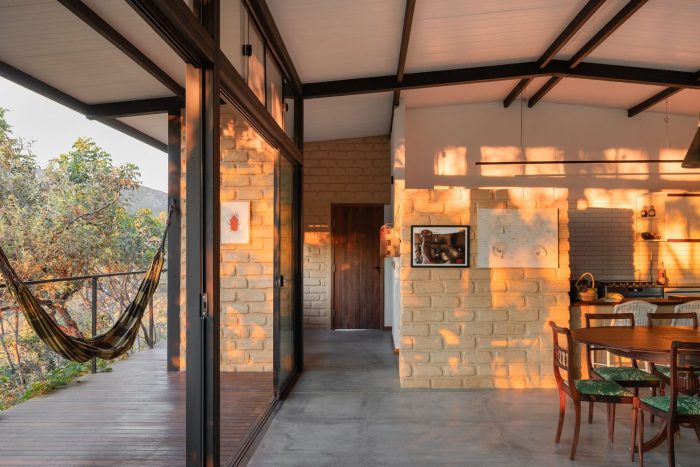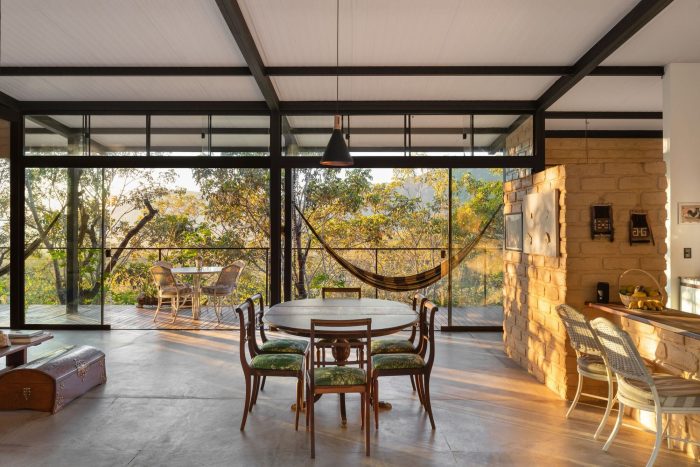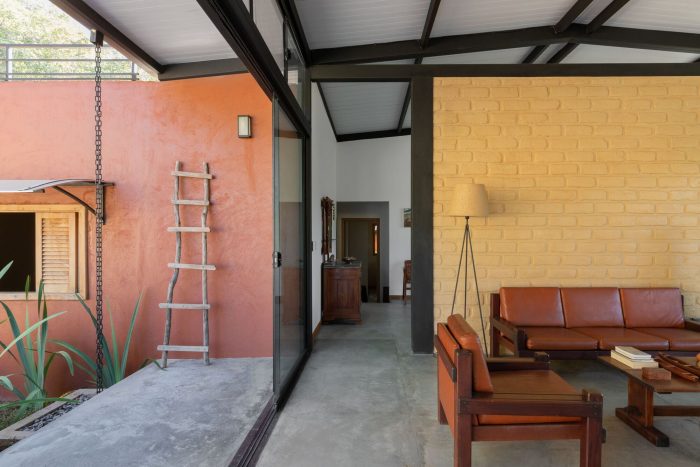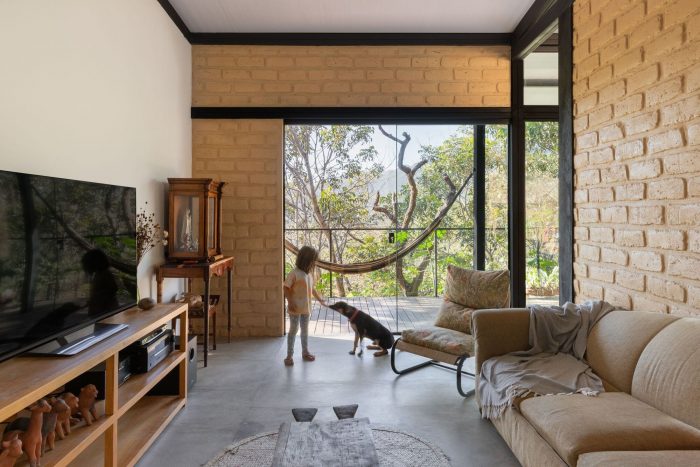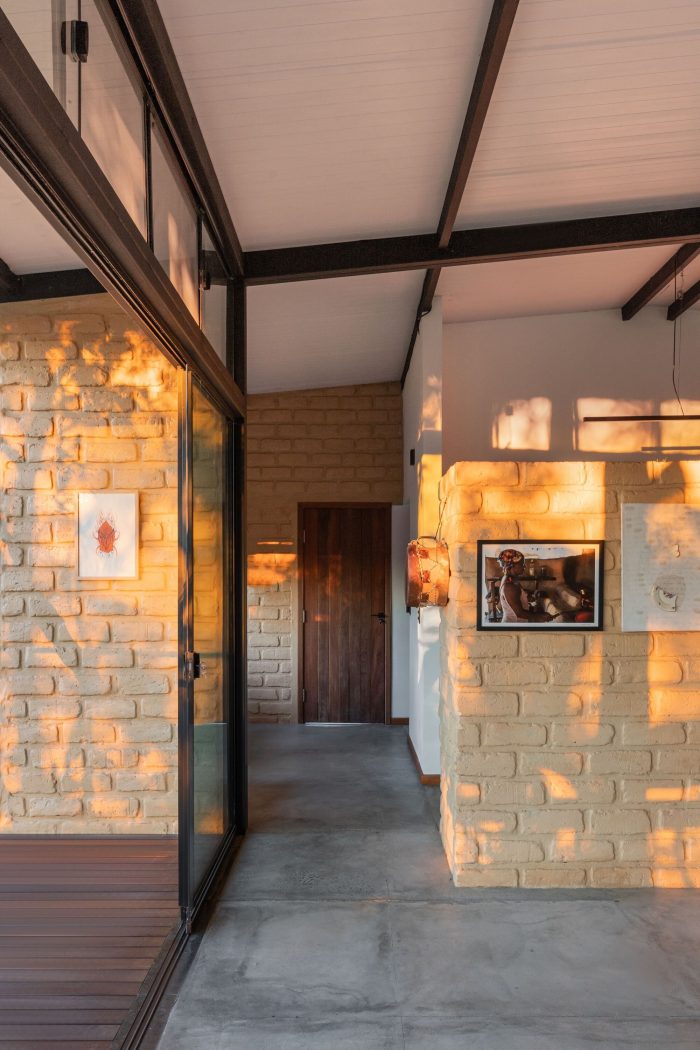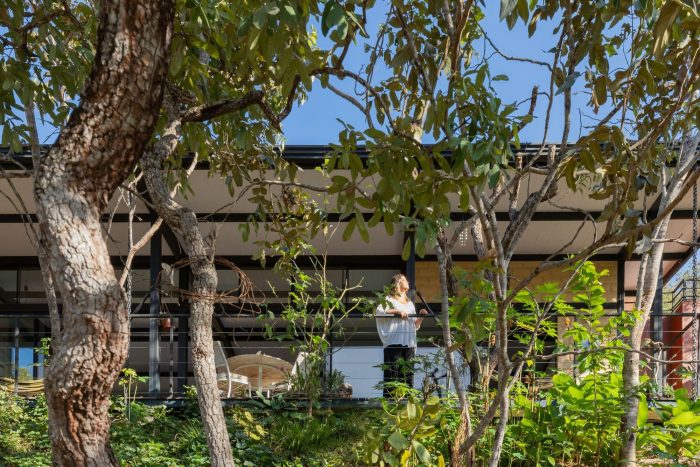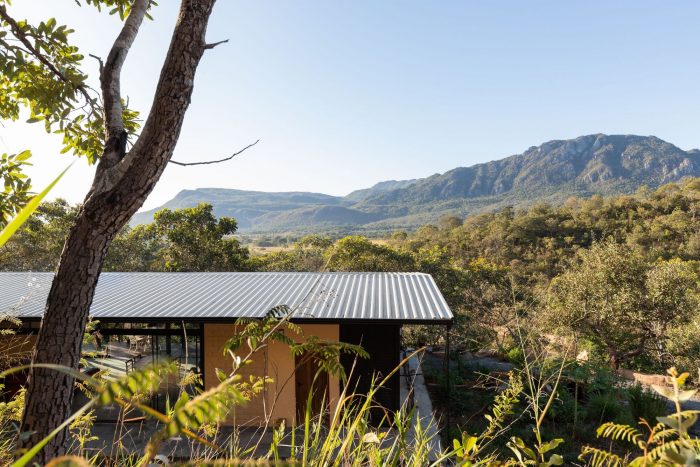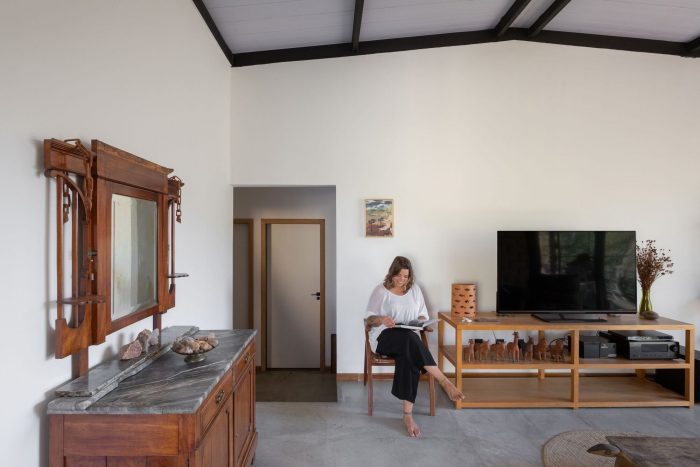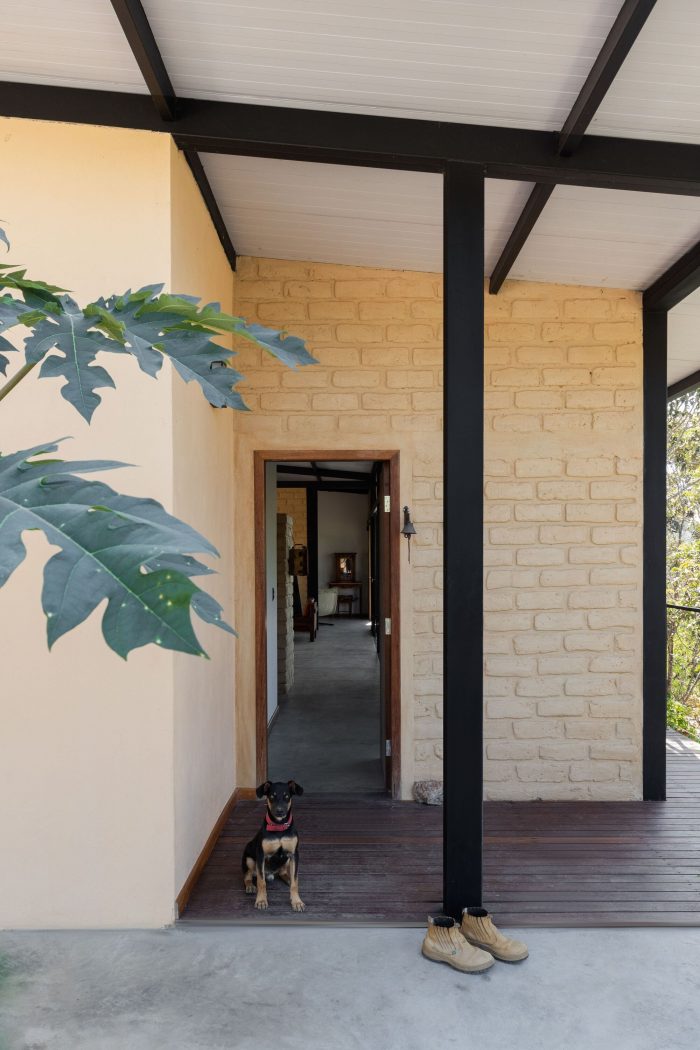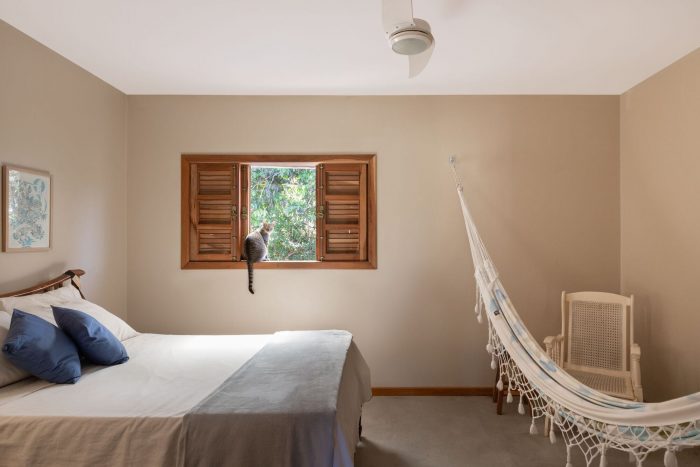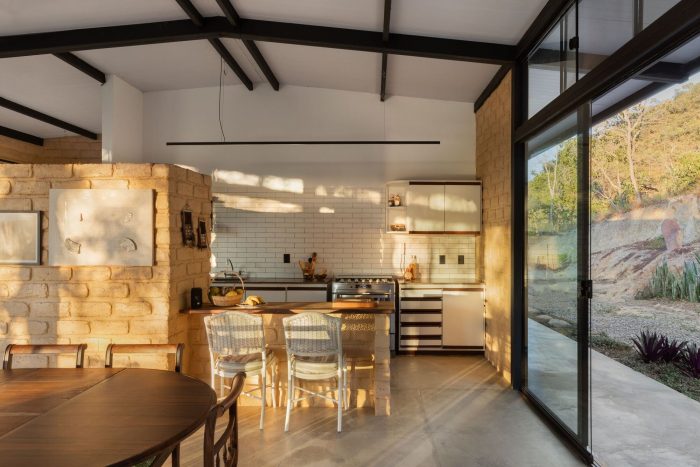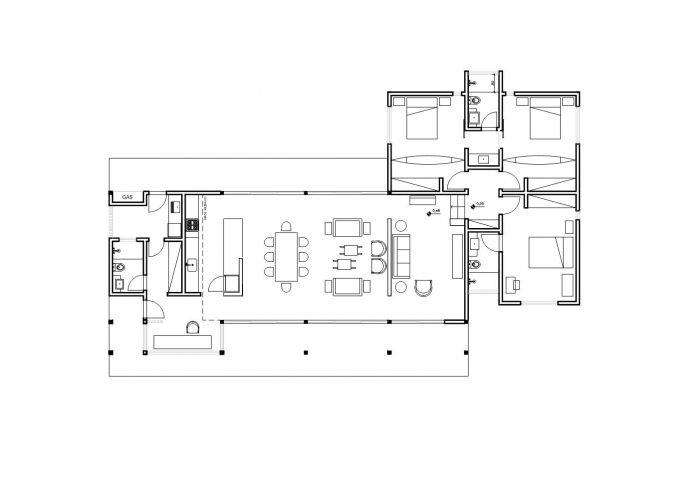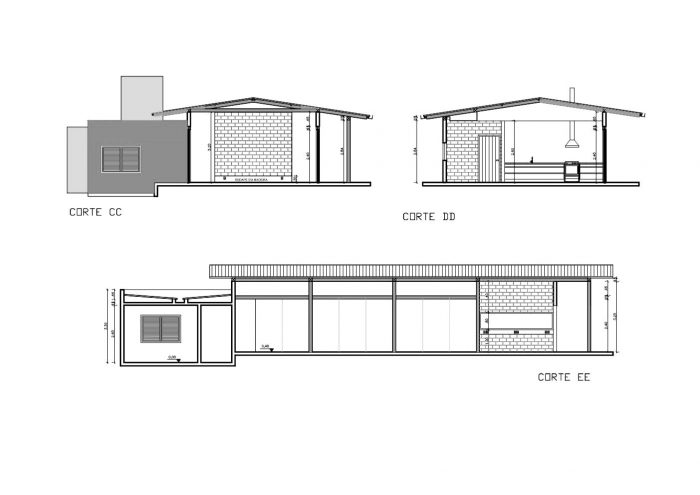在巴西多个地区和国外生活过后,Natalia决定在戈亚斯州的Chapada dos Veadeiros建立她的巢穴。在毗邻Chapada dos Veadeiros国家公园的Cavalcante农村小镇生活了4年后,建立一个与自然直接接触的家园的想法非常有意义。她选择了一块可以看到桑塔纳山的陡峭地块,并将其命名为Aruak–这是对他们家族后裔的土著人的致敬。
After living in multiple regions of Brazil and abroad, Natalia decided to create her nest at Chapada dos Veadeiros, in the state of Goias. After 4 years of living in the rural town of Cavalcante, adjacent to the Chapada dos Veadeiros National Park, the idea of a home in direct contact with nature made a lot of sense. She chose a steep lot with views of the Santana Hills and named it Aruak – an homage to the indigenous people from which the family descends.
她的愿望是创造一个避难所,撤退,并沉浸在大自然中的空间。还有一个愿望是用土坯砖建造,这是当地社区使用的一种质朴的传统材料,其热性能适合于该地区的炎热气候。由于土壤的天然颜色,用当地粘土制成的土坯砖具有强烈的黄色色调,当被植被过滤的晨光照射到时,几乎变成了金色。
The aspiration was to create a space that was a refuge, retreat, and immersed in nature. There was also a desire to build with adobe bricks, a rustic, traditional material used by the local communities, whose thermal performance is appropriate to the hot climate of the region. Due to the natural color of the soil, the adobe bricks made with local clay have a strong yellow hue that comes to life as almost golden when hit by the morning light filtered by the vegetation.
有许多限制。cerrado或巴西大草原是一个对干预敏感的生物群落。任何离Chapada dos Veadeiros国家公园这么近的建筑都应该努力限制其对周围环境的影响。除了预算和合格的当地劳动力方面的挑战,进入施工现场也很困难。所有这些限制意味着建筑系统需要合适。我们选择了金属结构和热声屋顶板,也被称为三明治瓦。
There were many limitations. The cerrado or Brazilian savanna is a biome sensitive to interventions. Any construction so close to the Chapada dos Veadeiros National Park should strive to limit its impacts on the surroundings. Besides the challenges with a budget and qualified local labor, access to the construction site was difficult. All those limitations meant that building systems needed to be appropriate. We opted for metallic structure and thermoacoustic roof panels, also known as sandwich tiles.
在一侧,房子接触到斜坡,在另一侧,它感觉像一个树屋。社交空间处于树顶的高度,作为背景,我们看到了桑塔纳山。一面裸露的土坯墙隔开了一个家庭房,它可以通向卧室区,相对于社会区来说,卧室区略低。
On one side, the house touches the slope and on the other, it feels like a tree house. Social spaces are at the height of the treetops and as a backdrop, we see the Santana Hills. An exposed adobe wall separates a family room that gives access to the bedroom block, slightly lowered in relation to the social block.
隔离在cerrado地区,Aruak房子追求自主性和太阳能板的能源效率。生态管道系统已经到位,以重复使用废水。除了实施一个防止黑水污染土壤和地下水的系统外,房子还处理和重新利用灰水用于种植。
Isolated in the cerrado, Aruak House pursues autonomy and energy efficiency with solar panels. Ecological plumbing systems have been put in place to reuse wastewater. Besides implementing a system to prevent black water pollution of the soil and the groundwater, the house treats and reuses gray water for planting.
当光和影在土坯的表面整天移动时,我们记得时间也在阿鲁阿克房子里流逝–尽管那里的时间感觉与城市时间非常不同。在周末,大家庭从200英里外的巴西利亚赶来,与纳塔利娅和若昂在一起,分享Chapada dos Veadeiros的一点梦想。
As light and shadow move on the adobe surfaces throughout the day, we remember that time also goes by at Aruak House – although time there feels very different from city time. Over the weekends, extended family travels from Brasilia, about 200 miles away, to be with Natalia and João and to share a bit of the Chapada dos Veadeiros dream.
Architects: Caetano Xavier de Albuquerque Arquitetura e Interior
Area : 220 m²
Year : 2021
Photographs :Julia Tótoli
Manufacturers : Fort Vidros
Ecological Sanitation Systems : João Victor de A. Brandão
Adobe : Carlos Pereira
Steel Structure : Ferragista SOS
City : Cavalcante


